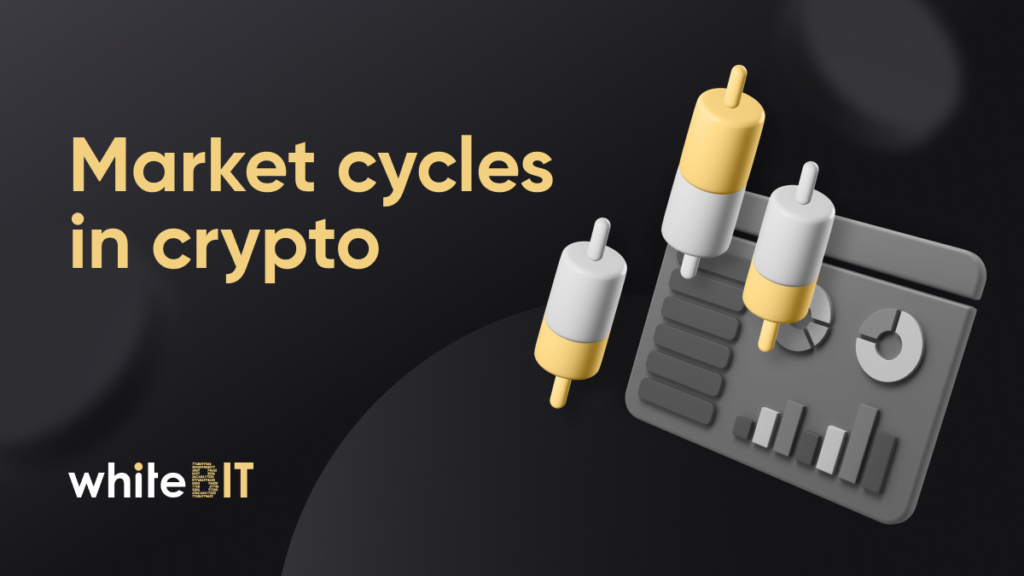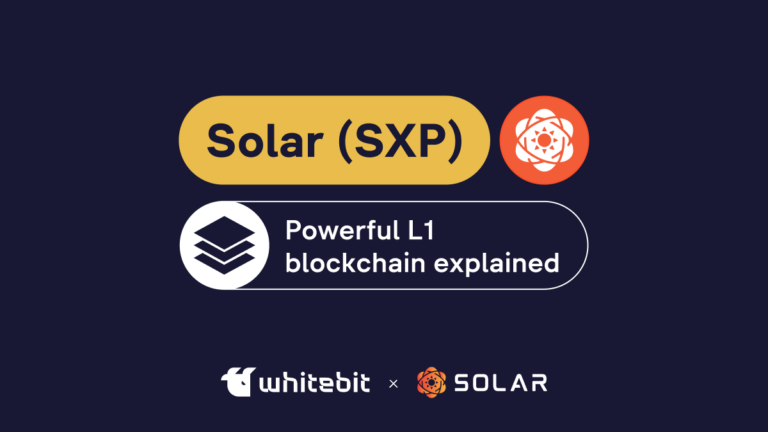Market сycles: develop a winning trading strategy

Content
Cryptocurrencies are highly volatile, which is why it is so important to choose the right time to buy and sell them. Understanding how market cycles work can help you with that.
What is a market cycle?
All markets, including the cryptocurrency one, are cyclical. They hit all-time highs and then bottom out. According to the theory of market psychology, the value of an asset changes in response to the general market sentiment. An uptrend is associated with confidence among traders and leads to an increase in demand and a decrease in supply. The downtrend is accompanied by the spread of negative sentiments and a drop in demand, which means a rise in supply.
One cycle replaces another. Thus, market cycles are trends or patterns that form in the market over time and represent the period between the two latest highs and lows.
Phases of market cycles
Each cycle consists of four main phases. It is important to be able to identify each of them to avoid losses and maximize trading profits. Let’s figure out what characterizes each phase and how to recognize it.
Accumulation
A new cycle begins after the market bottoms, and investors start buying the asset hoping the worst is over. The overall mood remains bearish. The values look pretty attractive, and for everyone ready to give up and sell an asset, there is a buyer ready to buy it at a low price. At the same time, the general mood in the market starts to change from negative to neutral slowly.
Markup
The market has been stable for some time, and the price starts to rise. Traders watch the formation of higher lows and recognize that the direction of price movement has changed. Discussions emerge that the worst is over, and more investors are joining the trend, driven by FOMO.
Trading volumes rise, asset prices skyrocket, and rationalism is giving way to greed. While beginners continue to buy the asset, professional traders start to close positions. The price levels off or stops rising, but some see this as an opportunity to enter the market. The value is peaking, and investor sentiment becomes euphoric.
Distribution
When the value reaches its peak, sellers start to dominate over buyers. The prices typically hover within the same trading range. The market ceases to bring large profits, but investors continue hoping that the price will rise to its previous value soon. There is mixed market sentiment. This phase can last from a couple of weeks to several months, and sometimes even years. Those who missed selling at a profit now settle to break even or take a slight loss.
Markdown
This is the final cycle phase, during which those who were still holding begin to give up. Many investors who purchased an asset during the distribution phase or at the beginning of the markdown phase start to sell it only when the price falls by half or below. This becomes a buy signal for advanced traders and investors. They predict an imminent change in the market direction and get ready to buy the asset during the next phase, which is accumulation.
Final thoughts
The ability to recognize the current phase of a market cycle is the key to success in trading. By understanding what is happening with the market now, you can pick the best strategy. Buy during the accumulation phase, HODL, waiting for the price increase, sell the asset during the distribution phase, and exit before the market falls.
The most important thing is to cast away emotional attachment to losing trading positions and be able to close them in time. Make sure not to succumb to FOMO or greed, which can make you buy high or sell low.








